 W
WThe NASA Sounding Rocket Program (NSRP) is a NASA run program of sounding rockets which has been operating since 1959. The missions carried out by this program are primarily used for scientific research, particularly low gravity and material based research. NASA's sounding rocket program is commonly used by colleges and universities for upper atmosphere research.
 W
WThe Aerobee rocket was one of the United States of America's most produced and productive sounding rockets. Developed by the Aerojet Corporation, the Aerobee was designed to combine the altitude and carrying capability of the V-2 with the cost effectiveness and mass production of the WAC Corporal. More than 1000 Aerojets were launched between 1947 and 1985, returning vast amounts of astronomical, physical, aeronomical, and biomedical data.
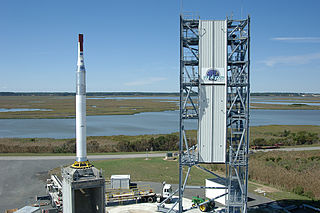 W
WALV X-1 was the first and only flight of the ATK Launch Vehicle (ALV) sounding rocket developed by Alliant Techsystems. The launch occurred from LP-0B at the Mid-Atlantic Regional Spaceport (MARS) at NASA's Wallops Flight Facility. This mission carried the SOAREX-VI and Hy-BoLT experiments as payloads when it launched at 09:10 GMT on August 22, 2008. The vehicle was terminated 20 seconds into flight after veering too far off course.
 W
WArcas was the designation of an American sounding rocket, developed by the Atlantic Research Corp., Alexandria, Va..
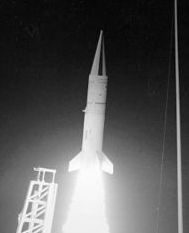 W
WAries is an American sounding rocket and target rocket, developed by Space Vector Corporation from retired LGM-30 Minuteman I intercontinental ballistic missile (ICBM) stages for use by the United States Air Force and NASA. Taken over by Orbital Sciences Corporation, Aries, as the Target Test Vehicle, remains in use.
 W
WASP, (Atmospheric Sounding Projectile is the designation of an American sounding rocket family. ASP-I was used to sample nuclear explosions and resultant clouds The ASP was the fastest single stage sounding rocket when developed. The Asp was manufactured by Cooper Development Corporation, California. The solid propellant motor was made by Grand Central Rocket company.
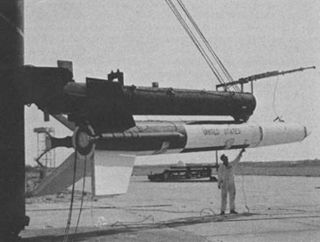 W
WAstrobee is the designation of series of American sounding rockets with 1 - 3 stages.
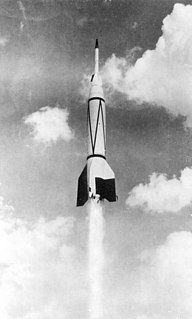 W
WThe RTV-G-4 Bumper was a sounding rocket built by the United States. A combination of the German V-2 rocket and the WAC Corporal sounding rocket, it was used to study problems pertaining to two-stage high-speed rockets. The Bumper program launched eight rockets between May 13, 1948, to July 29, 1950. The first six flights were conducted at the White Sands Missile Range, the seventh launch, Bumper 8 on July 24, 1950, was the first rocket launched from Cape Canaveral.
 W
WThe Coquí and Coquí 2 campaign involved a sequence of sounding rocket launches in order to study the dynamics of the E- and F-region ionosphere and increase our understanding of layering phenomena, such as sporadic E layers. The studies were supported by the United States' National Aeronautics and Space Administration (NASA) and carried out in 1992 and 1998 respectively.
 W
WThe Focusing Optics X-ray Solar Imager, or FOXSI, is a sounding rocket payload built by UC Berkeley and led by Säm Krucker to test high energy grazing-incidence focusing optics paired with solid-state pixelated detectors to observe the Sun. FOXSI is composed of seven identical Wolter-I telescope modules, as well as Silicon and Cadmium Telluride strip detectors originally developed for the HXT telescope on the Japanese Hitomi mission. The FOXSI payload flew two times, most recently in 2014 and previously in 2012. Like most sounding rockets, FOXSI flew for approximately 15 minutes per mission and observed the Sun for about 5 minutes while in space. During its first flight, FOXSI successfully imaged a solar microflare in the hard x-ray band for the first time.
 W
WImproved Orion is the designation of an American sounding rocket. It has a maximum flight altitude of 85 km, a liftoff thrust of 7.00 kN, a total mass of 400 kg, a core diameter of 0.35 m and a total length of 5.60 m.
 W
WJaguar was a three-stage sounding rocket developed by the United States Air Force in the early 1960s. Designed for air launch to allow soundings from remote areas without infrastructure, it was only launched twice before the project was abandoned.
 W
WJason was an American sounding rocket with 5 stages. The Jason was launched 22 times in 1958. The Jason could carry a payload of 125 pounds to an altitude of 500 mi. The launch thrust was 82,100 pounds-force, the launch mass 7,340 lb, the diameter 58 centimeters and the length 17.5 meters.
 W
WJavelin was the designation of an American sounding rocket. The four stage Javelin rocket had a payload of around 125 pounds, an apogee of 1100 kilometers, a liftoff thrust of 365 kilonewtons, a total mass of 3,385 kilograms, and a core diameter of 580 millimeters. It was launched 82 times between 1959 and 1976.
 W
WThe Jupiter-C was an American research and development vehicle developed from the Jupiter-A. Jupiter-C was used for three unmanned sub-orbital spaceflights in 1956 and 1957 to test re-entry nosecones that were later to be deployed on the more advanced PGM-19 Jupiter mobile missile. The recovered nosecone was displayed in the Oval Office as part of President Dwight D. Eisenhower's televised speech on November 7, 1957.
 W
WLoki, officially designated 76mm HEAA Rocket T220, was an American unguided anti-aircraft rocket based on the German Taifun. Like the Taifun, Loki never saw service in its original role, but later found widespread use as a sounding rocket. It was so successful in this role that several advanced versions were developed on the basic Loki layout, including the final Super Loki.
 W
WThe NOTS-EV-2 Caleb, also known as NOTS-500, Hi-Hoe and SIP was an expendable launch system, which was later used as a sounding rocket and prototype anti-satellite weapon. It was developed by the United States Navy's Naval Ordnance Test Station (NOTS) as a follow-up to the NOTS-EV-1 Pilot, which had been abandoned following ten launches officially classified as failed missions. Two were launched in July and October 1960, before the cancellation of the project. Following cancellation, two leftover Calebs were used in the Satellite Interceptor Program (SIP), while three more were used as sounding rockets, under the designation Hi-Hoe. These derivatives flew until July 1962, when the Hi-Hoe made its final flight.
 W
WThe Redstone rocket was named for the Redstone Arsenal in Huntsville, Alabama where it was developed. The Redstone family of rockets consisted of a number of American ballistic missiles, sounding rockets and expendable launch vehicles operational during the 1950s and 1960s. The first member of the Redstone family was the PGM-11 Redstone missile, from which all subsequent variations of the Redstone were derived. The Juno 1 version of the Redstone launched Explorer 1, the first U.S. orbital satellite in 1958 and the Mercury-Redstone variation carried the first two U.S. astronauts into space in 1961.
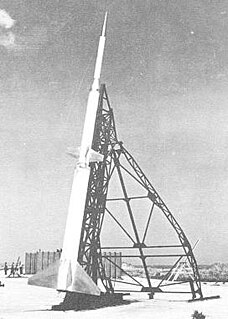 W
WThe Exos, originally designated RM-86 and later PWN-4, was a sounding rocket developed by the University of Michigan and NACA for use by the United States Air Force.
 W
WSparoair was a family of air-launched sounding rockets developed by the United States Navy in the late 1950s and early 1960s. Based on the Sparrow air-to-air missile, three versions of the rocket were developed; although some launches were successful, the system did not enter operational service.
 W
WLoki, officially designated 76mm HEAA Rocket T220, was an American unguided anti-aircraft rocket based on the German Taifun. Like the Taifun, Loki never saw service in its original role, but later found widespread use as a sounding rocket. It was so successful in this role that several advanced versions were developed on the basic Loki layout, including the final Super Loki.
 W
WTaurus Nike Tomahawk, or TNT for short, is a sounding rocket which was first built in 1983. When it was in operation it was used to explore the upper atmosphere.
 W
WTerasca, or Terrier-ASROC-Cajun, was an American three-stage sounding rocket developed and launched by the United States Navy. Derived from a combination of the Terrier, ASROC and Cajun rockets, three launches were attempted during 1959, but only one was successful.
 W
WThe Terrier Malemute is a two-stage American sounding rocket typically used for smaller payloads. Both the Terrier first stage and the Malemute second stage use solid fuel. The Terrier burns for approximately 5.2 seconds, and the Malemute burns for approximately 21.5 seconds. The first stage booster consists of a surplus Navy Terrier MK 12 Mod 1 rocket motor with four 0.22 m2 (340 sq in) fin panels arranged in a cruciform configuration. The Terrier rocket booster has a diameter of 460 mm (18 in). The second stage solid rocket is a Thiokol Malemute TU-758 rocket motor, specially designed for high altitude research rocket applications. Apogee is approximately 400 km (220 nmi) for a 230 kg (510 lb) payload or 700 km (380 nmi) for a 41 kg (90 lb) payload. For a payload weight of 200 lb (91 kg), the acceleration during the boost phase is 26 g.
 W
WTerrier Oriole is an unguided two-stage rocket system which is primarily used by the Goddard Space Flight Center out of the Wallops Flight Facility as a sounding rocket. The system uses a Terrier first-stage booster attached to an Oriole second-stage rocket. The system can carry payloads between 800 to 1,500 pounds up to an altitude of 320 kilometres (200 mi). It is also used to test ballistic missile defense systems, under the name ARAV-B.
 W
WThe Terrier Orion sounding rocket is a combination of the Terrier booster rocket with the Orion rocket used as a second stage. This spin stabilized configuration is most often used by the Goddard Space Flight Center, who operate out of the Wallops Flight Facility for sounding rocket operations. The system supports payloads ranging from 200 to 800 pounds, and is capable of achieving altitudes as high as 120 miles (200 km), but at least 50 miles (80 km), depending on payload size.
 W
WViking was series of twelve sounding rockets designed and built by the Glenn L. Martin Company under the direction of the U.S. Naval Research Laboratory (NRL). Designed to supersede the German V-2, the Viking was the most advanced large, liquid-fueled rocket being developed in the U.S., returning valuable scientific data from the edge of space between 1949-1955.
 W
WViper Dart is an American sounding rocket originally developed in 1972. Space Data Corporation (SDC) developed the vehicle as a mean to increase the apogee of the Super Loki boosted PWN-12A dart. The PWN-12A dart is the non-propulsive second stage that contains a ROBINSphere. The ROBINSphere is a calibrated weight inflatable 1 meter diameter radar reflecting balloon, weighing in at about 150 grams. The weight is measured within one-half gram.
 W
WThe WAC Corporal was the first sounding rocket developed in the United States. The Corporal program was started by a partnership between the United States Army Ordnance Corps and the California Institute of Technology in June 1944 with the ultimate goal of developing a military ballistic missile by developing the technology necessary. The California Institute of Technology had been fostering a group of rocket enthusiasts known informally during the 1930s as the "suicide squad", which was financed by the Guggenheim Aeronautical Laboratory (GALCIT) since the mid 1930s. Some of the GALCIT enthusiasts had founded a business to manufacture rocket motors named Aero Jet.
 W
WThe Aerojet General X-8 was an unguided, spin-stabilized sounding rocket designed to launch a 150 lb (68 kg) payload to 200,000 feet (61.0 km). The X-8 was a version of the prolific Aerobee rocket family.